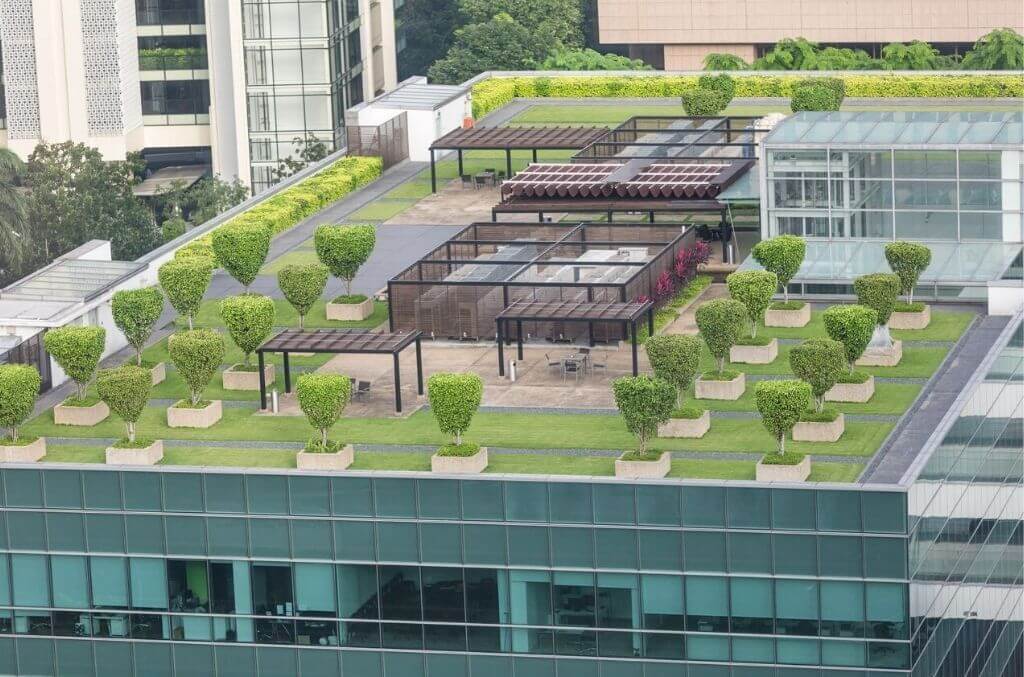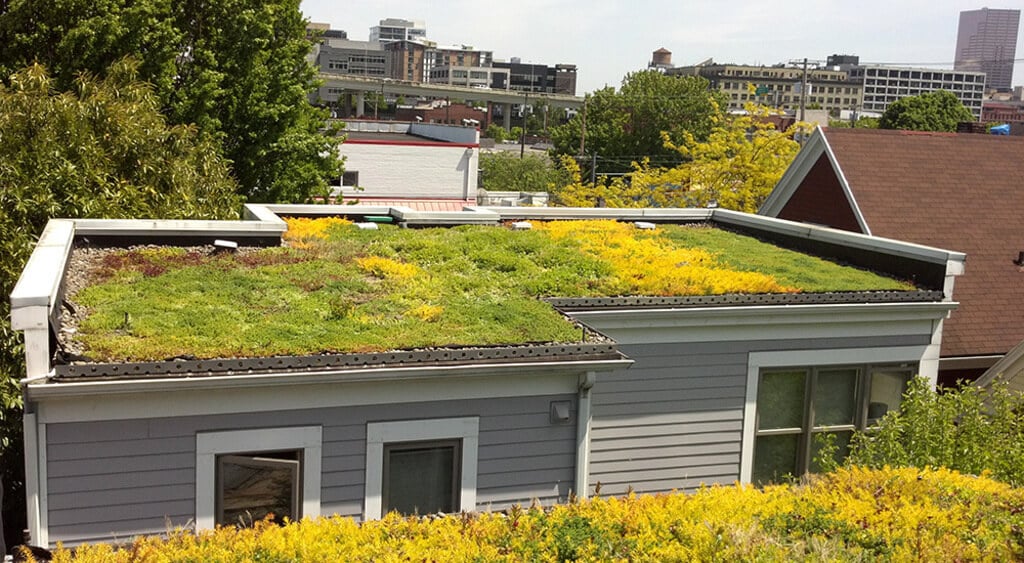Have you ever thought your existing roof could use a little greenery? Well, you are not the only one. This new type of roofing system changes how homeowners and cities view roofing.
Welcome to the science of green roofing.
Green roofing as a concept is not new. You have likely seen old rustic homes in Europe covered in a thin layer of moss or some other type of plant life. So how does green roofing help you as a homeowner?
Green Roofing 101
A green roof systems allows a homeowner to use their existing roof to grow plants or other types of greenery. This idea needs some work on the backend, however. We do not want you to toss some dirt and seeds on your roof and call it a day.
Green roofing systems require homeowners to waterproof their roofs and install a roof repellant. On top of that, a homeowner must consider how drainage will work and how to clean drains. Water and roofs usually do not mix – especially considering a large plant layer on top of the roof.
So, what do you need to do if you opt for a green roof?
Consider the Following
Remember, a roof is an investment in your home — not some frivolous expense. A quality roof prevents water from leaking into your home and provides a layer of protection between the homeowner and the elements.
All that said, it is time to discuss the different types of green roofing.
Green Roofing Types and Benefits
There are three types of green roofing: intensive, semi-intensive, and extensive. All three types of green roofing depend on the level of care you are willing to invest in having a green roof.
Intensive Green Roofing
A heavily maintained intensive green roofing system recreates the circumstances of a typical garden above ground. As its name implies, intensive green roofs require much more maintenance because a homeowner is tending to a garden on their roof.
These green roofs are also heavier, leading to homeowners needing to reinforce their roofs to allow for the extra vegetation.
Semi-Intensive Green Roofing
The benefit of semi-intensive green roofs is the variety of plants employed, although this requires a deeper soil layer. This green roof uses herbs, flowering plants, higher grasses, and tiny shrubs.
Extensive Green Roofing
Extensive green roofing is for the homeowner who wants a green roof but does not want to spend much time maintaining it. An extensive green roof has a shallow growing medium of fewer than six inches, a small roof load, little plant variety, little need for watering, and is frequently inaccessible.
Benefits
There are numerous benefits – to the homeowner and a community-at-large – to having a green roof. Green roofs offer shade, absorb heat from the atmosphere, and lower air and roof surface temperatures. Compared to conventional roofs, green roof temperatures can be 30 to 40 degrees lower and cool the city’s ambient temperatures by up to 5 degrees.
A cluster of green roofs helps improve air quality in an area. The vegetation on green roofs can filter harmful gasses, airborne contaminants, and atmospheric deposits.
Green roofing regulates temperature, can lessen the load on power plants, and possibly lower the amount of CO2 and other air-polluting byproducts produced.
Green roofs can provide a tremendous benefit to a motivated or environmentally-conscious homeowner. So, how do you go about installing a green roof? It starts with a design.
Designing a Green Roof
A green roof design starts with the type of green roof you may want. If you want a more hands-off approach to a green roof, you will desire an extensive roof.
An intensive roof will require a homeowner to take a deeper involvement in gardening their roof. From there, you will want to contact a trusted roofing company in your area that specializes in green roofing.
A green roofing contractor will work with you to plan the green roof, select the right plants and materials, and give you an estimate to avoid the dreaded sticker shock.
A well-designed green roof should last for years and make a bold statement in your home.
Installing a Green Roof
Green roofing installation depends on materials and plant types. A more intensive green roof means you will need a professional to reinforce the roof and install the appropriate weed barriers and guttering.
Many green roofs need waterproof membranes, plastic sheeting, insulation, drainage matting, and a layer of soil to help get the project off the ground. You may also opt to frame out the roof.
With all those items checked off your to-do list, it is time to plant and place the assorted greenery in the soil. Do not forget to water once the operation is complete, but be careful about over-watering.
Maintaining a Green Roof
Green roof maintenance can cause many homeowners to pause. After all, watering plants is a crucial part of keeping them alive, and too much water on a roof can lead to severe issues, including roof failure.
That is why installing proper drainage and gutter system will prevent roof failure. A homeowner will want to inspect their roof drainage system every few weeks to ensure excess water moves away from critical portions of the roof.
Drainage will also prevent too much water weight from staying stationary on your roof.
Depending on your climate and the type of plants on your green roof, you may have to institute a watering system every few days or let Mother Nature handle the operation.
Conclusion
With a greater emphasis on environmental improvement, homeowners and building owners are seeking new and innovative ways to reduce their carbon footprint. Green roofing is not new, but it is receiving consideration more often these days when it comes to helping the environment.
Homeowners — especially homeowners seeking to customize a new build — should consider green roofing as a way to reduce energy costs, help foster clean energy in their neighborhoods, and do their part to help the environment.
Discover More






